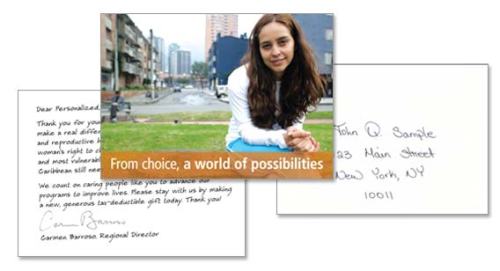 I applied for the position on a whim. A few years ago, I was between jobs while purchasing a bridal gift at a home goods store. Holiday season was approaching, so I applied for temporary work. Surprisingly, I learned some key lessons during my short tenure there which relate to many business arenas, including the nonprofit world. Read on to discover how I applied these lessons to break the all-time sales record for an ordinary household product.
I applied for the position on a whim. A few years ago, I was between jobs while purchasing a bridal gift at a home goods store. Holiday season was approaching, so I applied for temporary work. Surprisingly, I learned some key lessons during my short tenure there which relate to many business arenas, including the nonprofit world. Read on to discover how I applied these lessons to break the all-time sales record for an ordinary household product.
That home goods store requires that their cashiers do suggestive selling at the registers. The first item to sell was a set of nonstick skillets for $50. I was nervous about asking customers who had already made their purchases to add another $50 to their ticket. No one will buy these was my first thought.
Lesson 1: If you don’t ask, there is no opportunity for success. Each customer not asked to buy the skillets was an opportunity missed. And surprisingly to me, many said yes to adding another $50 to their ticket. Several even added more than one set of skillets to their ticket. So ask for what you need!
Once I made the first sale, I learned the next lesson.
Lesson 2: Success breeds success. The confidence gained from one “yes” fueled the next sale. My confidence grew. My fear diminished. I was encouraged to keep asking customers to purchase the skillets. So remember that success in asking for what you need will lead to more success in getting what you need.
However, not everyone said yes. Sometimes they said no.
Lesson 3: No once doesn’t mean no the next time. Even no for the fourth time in a row doesn’t mean no the next time. Not everyone will say yes to your request. But no once doesn’t mean the next answer will be no.
Lesson 4: Not every day is a yes day. Some days, the answer is no all day long. But on no days, hang on to lessons 1 and 4. Tomorrow will be a new (and different) day! When the answer is no, regroup and re-evaluate the request. And return to lessons 1 and 4 for encouragement.
Learning to handle the no responses and remembering lessons 1 and 4 taught me lesson number 5.
Lesson 5: Success is contagious. The excitement generated from one sale often produced the next sale. The next person in line did not want to be left out. Be excited when you receive a yes answer. Publicize it! Let others know. Create an atmosphere such that others want to share in the success.
Lesson 6: Project confidence. Believe in what you are asking. I bought a set of the skillets so I could say I own the skillets and offer my own testimony about their value. With my level of confidence, the only item I could not sell was the Topsy Turvey tomato grower. (The product lacked greatness, and I could not manufacture any greatness.) Be genuine. Believe in what you are asking. Be a part of your mission.
Lesson 7. Smile. Build a relationship. Be likeable. People like doing business with others they like and with whom they have a relationship. If my friend posts a request to support her half marathon for her ill friend, I will support the cause, not necessarily for the ill friend but because I want to support my friend.
The final product I was asked to sell was the unglamorous room deodorizer for $6.99. Even though the product was packaged as two for $9.99, we were asked to sell the singles for $6.99. Using all the principles above, I sold 32 room deodorizers on one Saturday afternoon, breaking the record and amazing a visiting manager. And that brings me to the final lesson:
Hang on to those yes days. The memory of success will serve as encouragement for those no days and remind you that the next day just might be a yes day.
Laura Reifschlager
Trainer













